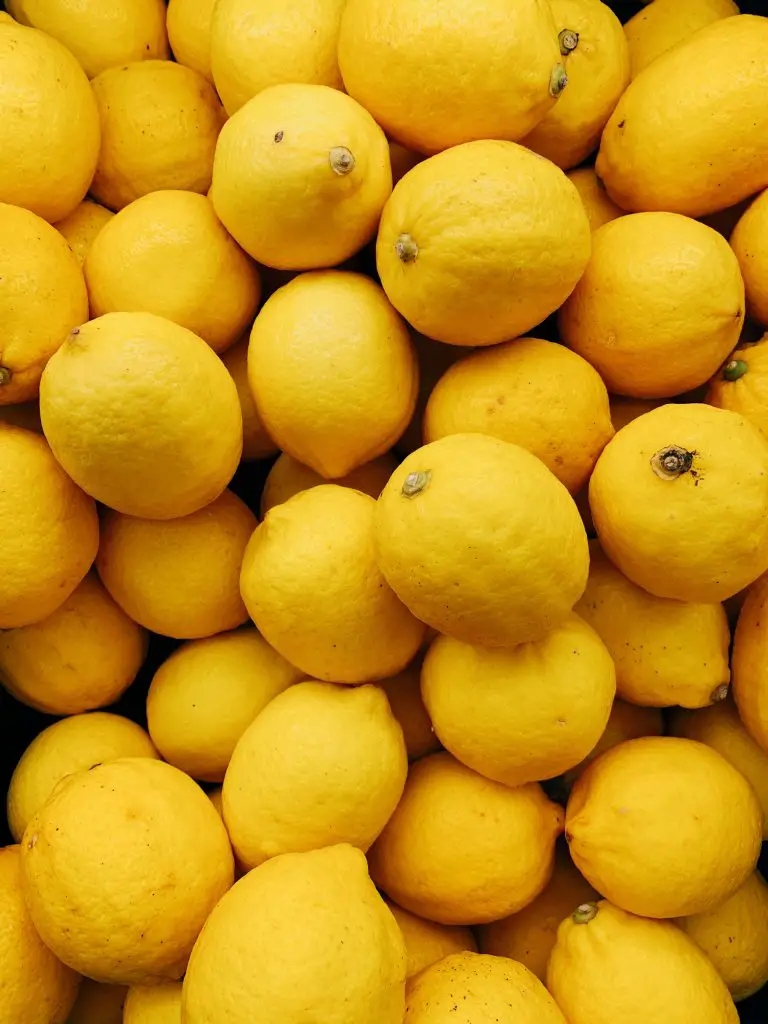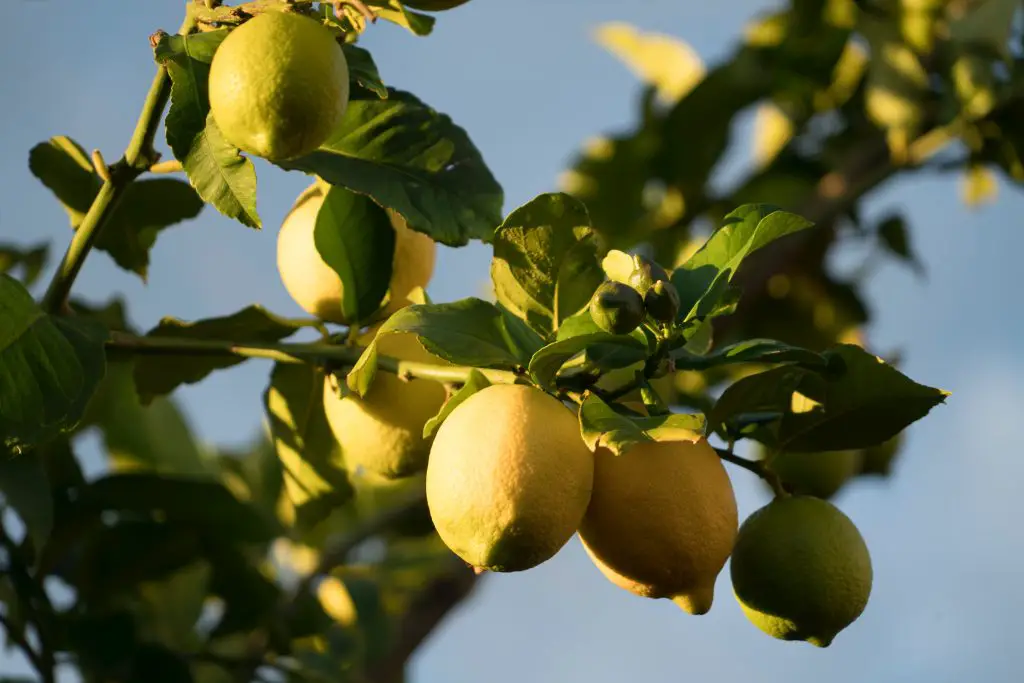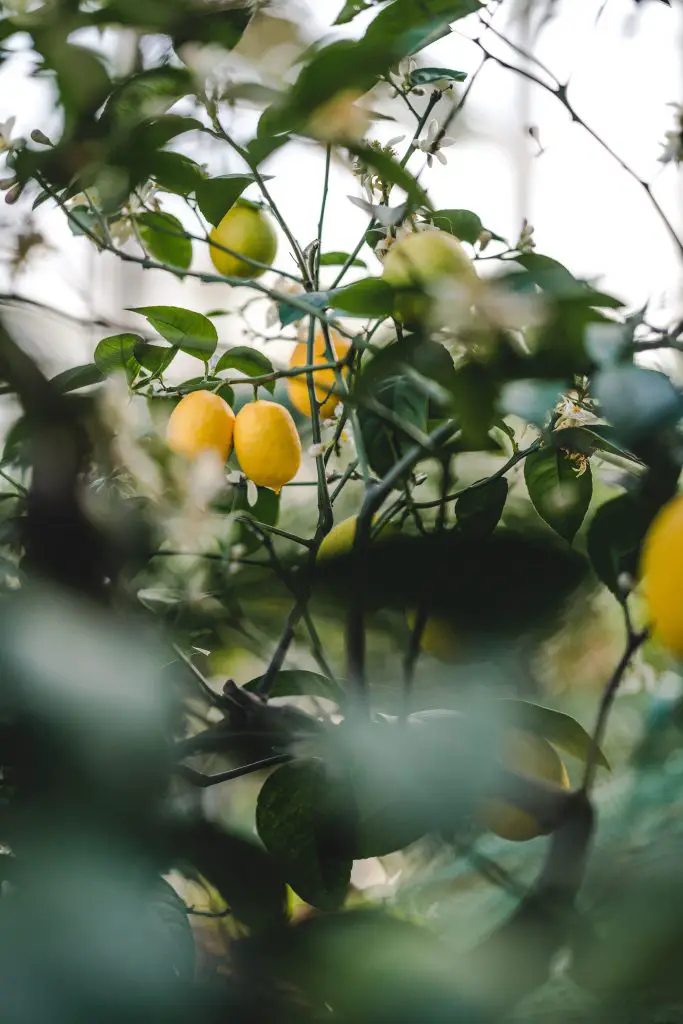How Much Fruit Does A Lemon Tree Produce? Lemon trees are one of the most popular citrus trees to grow in your yard, they are useful in cooking and also for making beverages like traditional lemonade.
Typically a full-size mature lemon tree will produce between 175 to 220 lbs (80 to 100 kg) of lemon per season according to a University of Arizona study. This equates to around 800 to 1000 fruit per annum. However, Lemon trees that are grown on dwarfing rootstocks will generally produce 45 lbs (20 kg) or so when mature which equates to around 200 fruit per annum.
Lemons grown on dwarfing rootstocks typically reach a height and width of around 6 to 10 ft (2 to 3m) whereas full-size trees can reach a size of 13 to 16 ft (4 to 5m). Given that 100 to 200 lemons a season is generally more than enough to satisfy the needs of most households, a dwarf tree is an obvious choice for the home gardener.
The variety that is most suitable for the home gardener is ‘Eureka’ as it thornless and produces fruit year-round. A comparison between the three most common varieties of Lemon trees, ‘Eureka’, ‘Meyer’, and ‘Lisbon’ is provided below.
What Climate Can A Lemon Tree Be Grown In?
Lemon trees have limited tolerance to the cold, at temperatures around 29°F (-2°C) blossoms and young fruit are destroyed. This limits the growing region to zones 9 to 11 in most cases. However, trees can be grown in colder locations in pots if they are moved indoors when the worst of the weather hits.

Lemon trees do best when the temperature is between 50°F and 80°F (10°C to 27°C) so the ideal time to bring trees inside is when the temperature starts to regularly fall below the 50°F (10°F).
When the trees are relocated indoors it is important that remain in a relatively bright location to allow the trees to continue photosynthesis. Additionally, it is important to ensure that the location does reach freezing temperatures at any point, it is best to aim for 40°F (4°C) or higher.
If the tree is transferred to a greenhouse or conservatory where it can get a little too cold it may be worth investing in a greenhouse heater. Greenhouse heaters differ from conventional domestic heaters because they are made of rust-resistant components which are suited for humid environments. The unit we recommend for this purpose is the Bio Green PAL 2.0/USDT Palma Greenhouse Heater which includes the heater and a thermostat for accurate control of temperature.
Do You Need More Than One Lemon Tree To Produce Fruit?
Lemon trees like most citrus trees are self-fertile, which means that only one tree is required to produce fruit. However, if you live in a region where it is necessary to grow the tree indoors during a flowering period hand pollination of the fruit will be required as pollinating insects will not able to access the flowers.
Hand pollination of a citrus tree is a relatively straightforward process. Take a fine artist’s brush and place the tip of the brush gently into the center of the flower and rotate the brush this will transfer the pollen onto the stamen of the flower.
What Are The Most Popular Lemon Varieties?
There are three really common varieties of Lemon that are sold commercially, Eureka, Lisbon, and Meyer.
The ‘Eureka’ variety was first developed in the 1850’s in Los Angeles. The tree is a medium-sized, thornless variety that has very few seeds and is grown widely in California. It produces fruit all year round but its heaviest cropping period is from Spring to early summer.
The limitations of this variety is that it is more cold-sensitive than other varieties and has limited resistance to insects and produces around 20% lower yield than the Lisbon variety according to a study by the University of Arizona.

The ‘Lisbon’ variety as the name suggests originated ‘Portugal’ in Morocco and appeared in regions like the US and Australia in the 1840’s. The fruit itself is very similar in shape and size to ‘Eureka’.
The Lisbon lemon produces its main crop in late winter and a smaller secondary crop in late Spring. The tree is relatively large compared to the Eureka and extremely thorny. However, it is generally more resistant to extremes in temperature, both hot and cold.
The ‘Meyer’ variety is a hybrid tree that was first introduced to the United States in the early 20th century from China. Being a hybrid between an Orange and Lemon it is less acidic in flavor than Eureka and Lisbon which are “true” lemons.
The tree is a thornless variety that fruits in Winter and Spring. The fruit that are produced are smaller and more round than ‘true’ lemons.
How To Grow A Lemon Tree
Lemon trees are a relatively easy plant to grow if you live in a region that does not get too cold or dry. When deciding to plant a Lemon tree the first consideration is the location, Lemon trees like all citrus trees prefer a sunny location with at least 6 hours of sunlight per day as trees planted in areas with limited amounts of sunlight will struggle to produce flowers and set fruit.
Additionally, it is best to select locations that are shielded from the prevailing wind as exposure to strong wind can disrupt the pollination process in some cases resulting in a poor yield.
It is also important to note that Lemons can be planted in a relatively confined space if the tree is espaliered. Espaliering is a pruning technique the limits the size of the tree while optimizing the output, to learn more click here.

Soil Conditions
Another key consideration is the soil conditions, Lemon trees prefer well-drained soil that contains plenty of nutrients and is slightly acidic. The ideal pH is between 6.0 to 7.0, to check this it is best to use a pH meter rather than a pH kit with indicator strips. The two main reasons for this are pH meters is are cheaper to buy and generally easier to use, click here to see the latest prices on Amazon.
If the pH of the soil needs to be adjusted lime may be added to increase the pH and sulfur can be added to reduce the pH. Once the chemicals have been added to the soil they need to be mixed into the soil.
If your garden has heavy clay-based soil it may be also necessary to modify the soil to improve the drainage as Lemon trees will not tolerate poorly drained.
To modify the soil start by incorporating gypsum as this will act as a “clay breaker” reducing the size of the clumps of clay. In addition to this, it is also advisable to add large amounts of compost and agricultural grit to further improve drainage. This alteration of the soil should be done within a 3 ft radius of where the tree is to be planted otherwise the water hold capacity of the surrounding soil will ensure the conditions remain quite wet.
If the heavy soil conditions remain a concern the drainage can be improved by creating a planting mound for the tree. This will allow the rootball of the tree to be elevated improving drainage.
Planting The Lemon Tree
Lemons tree can be planted year-round but the best time, by far, is in Spring once the weather is beginning to warm up. This is because the weather is warm enough for the tree to actively establish its root system but not so hot that the tree dries out easily.
To plant the tree start by digging a hole that is about twice the width and depth of the container the tree came in. Place the tree in the hole at the same depth as it was in the pot after lightly teasing the roots out with your hands. Backfill the hole with soil firming it down as you go to ensure there are no air pockets around the rootball.
Once the tree is in position water it in thoroughly and then cover the soil with a thick layer of mulch, 2 to 4 inches thick is ideal. When placing the mulch in position ensure that it does not come into contact with the trunk of the tree as this can cause collar rot.
Caring For Lemon Trees
Lemon trees are most susceptible to dry conditions in the first season or two and need to be watered regularly. It is best to do this at least once a week, though in dry conditions watering more frequently may be required. However, the level of the watering can be reduced once the tree’s root system has time to become established.
As citrus trees generally require a lot of nutrients it is important to regularly fertilize the trees. This is best done by fertilizing with pelleted manure every 2 to 3 months in the growing season. The fertilizer should be spread evenly around the drip zone of the tree and watered in well.
In terms of pruning, there is no specific pruning regime like some other fruit trees unless have espaliered the tree, click here for more information. However, Lemon trees do benefit from a light prune once a year as it encourages regrowth.
In addition to this, it is advisable to remove dead and diseased wood. The most common disease is gall wasp which creates lumps along the branches and needs to be cut out every year.
Related Articles
Can you espalier a lemon tree?
Can I Leave My Lemon Tree Outside In Winter?
What Is The Lowest Temperature A Meyer Lemon Tree Can Tolerate?
7 Easy Steps To Creating An Orchard In Your Own Yard
